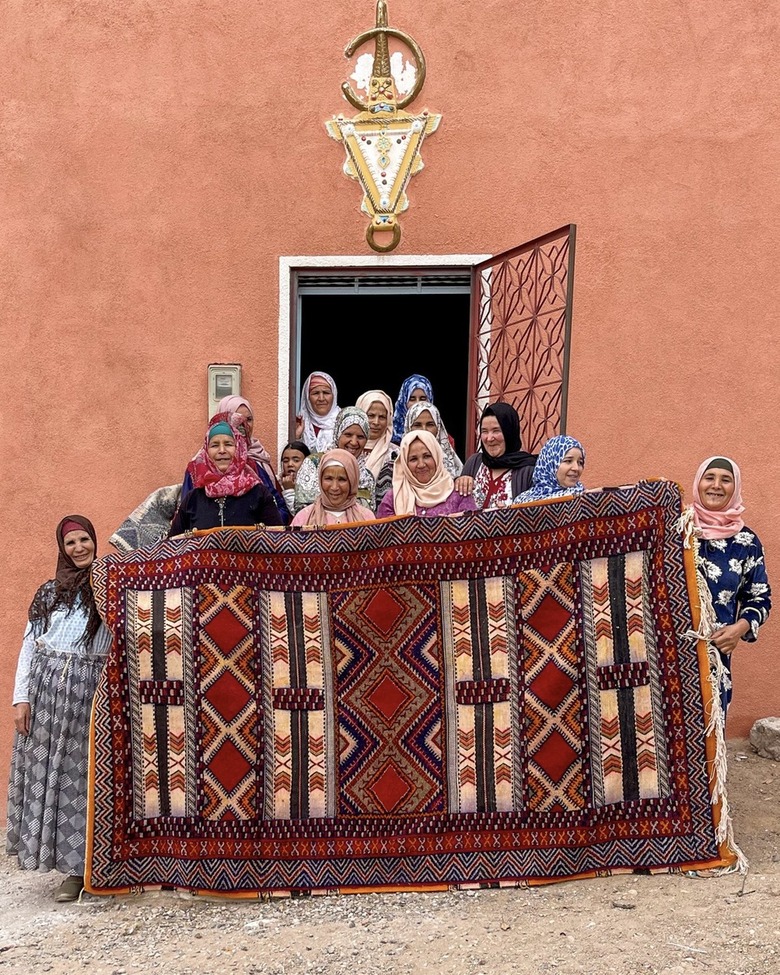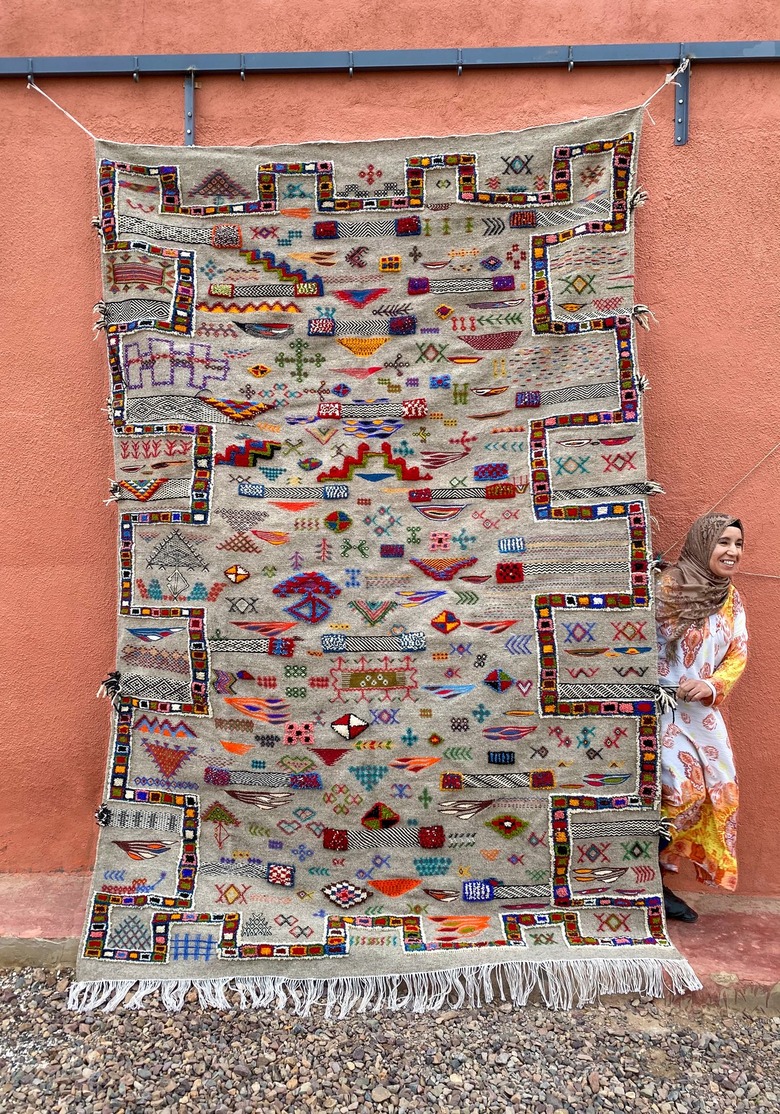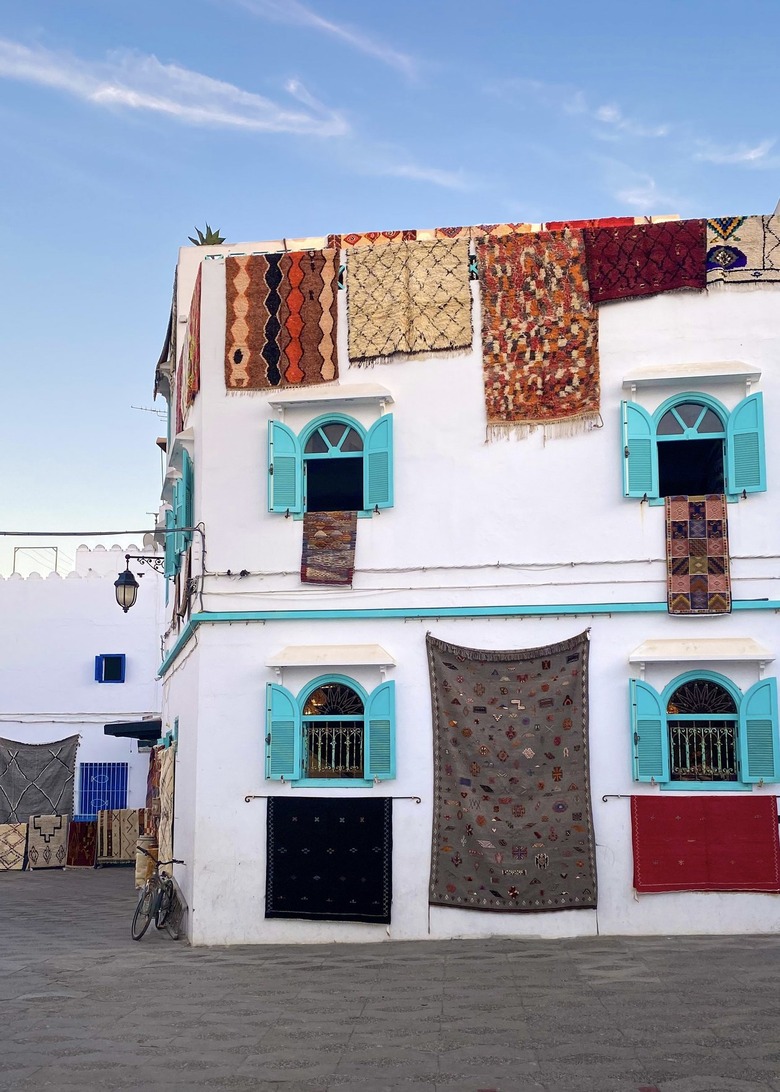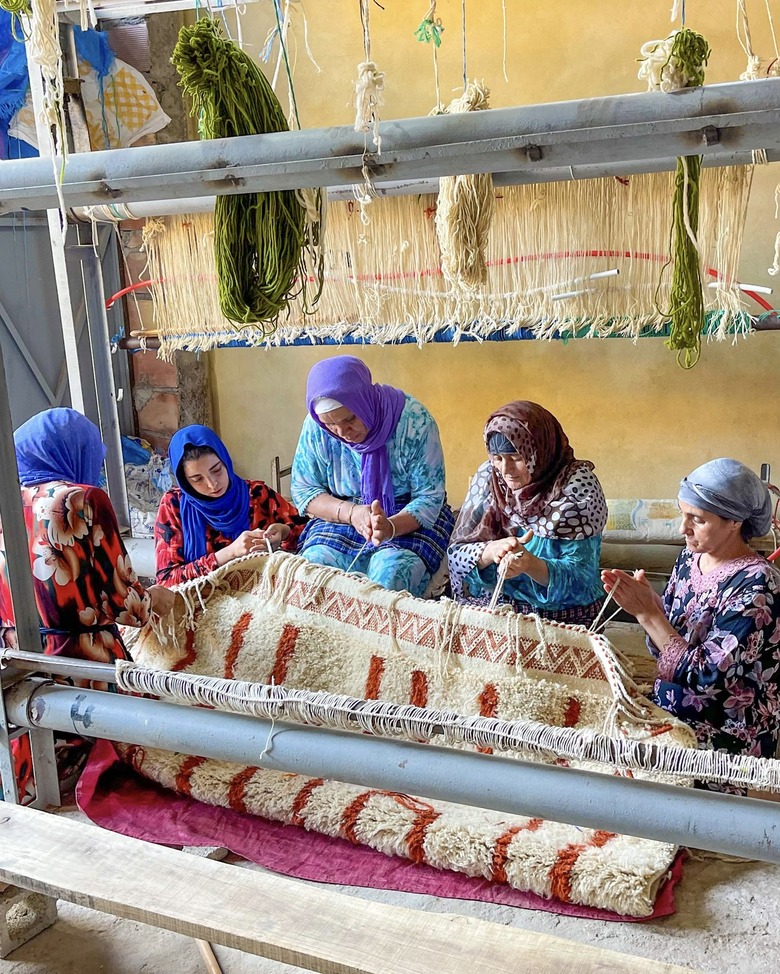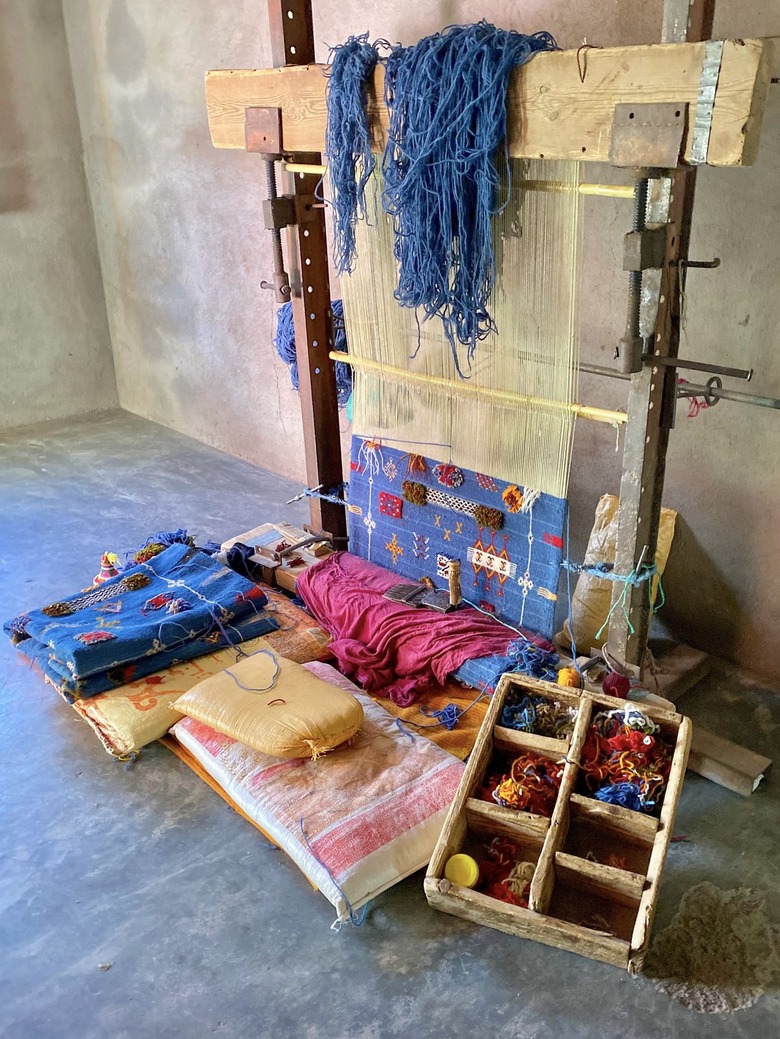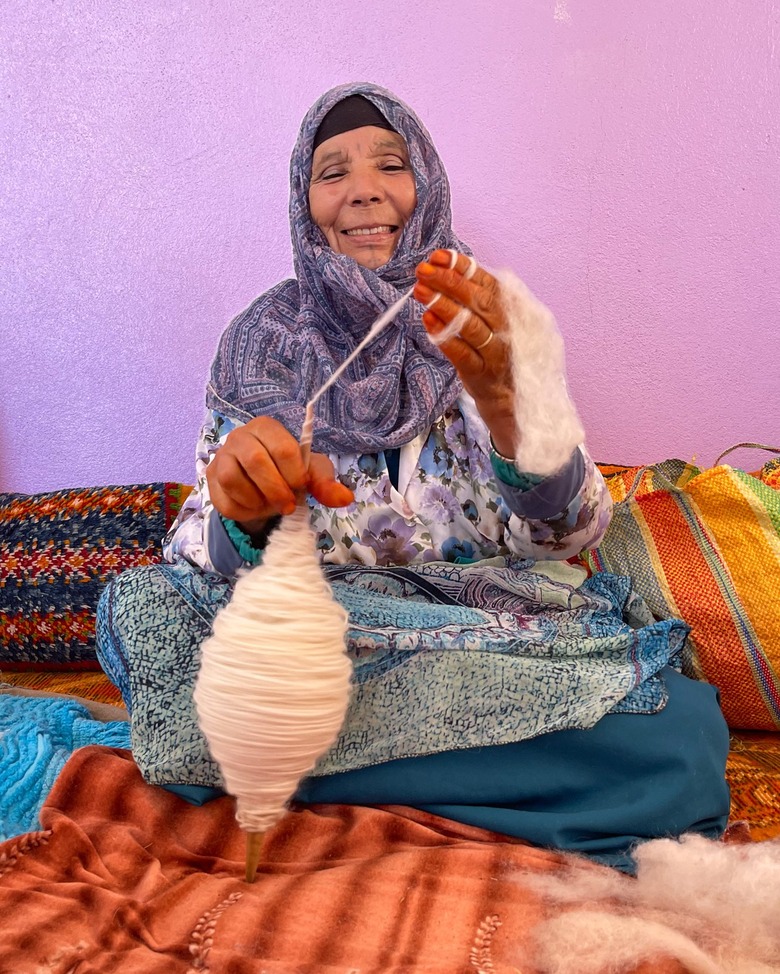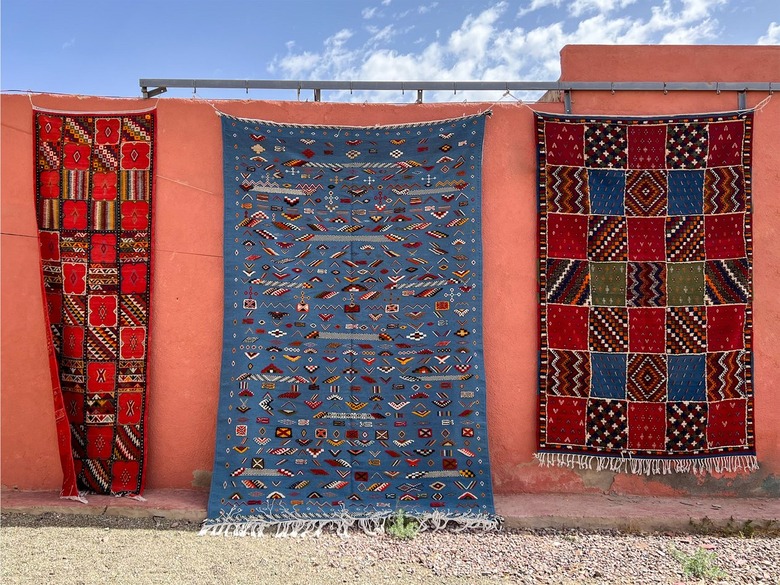The Amazigh Women Who Weave Moroccan Rugs Are Finally Getting Their Due
Mallory Solomon has always loved uncovering the stories behind brands. After an upbringing in California and schooling at the state's university in Santa Cruz, Solomon moved to New York and fully immersed herself in the advertising world. She has always been fascinated by the components that make up brand loyalty, and this interest followed her even after her career changed trajectory.
After a decade in advertising, in 2019, Solomon was coping with burnout. This prompted her to take a trip to Morocco, a country she quickly fell in love with. The environment reminded her of the landscape that passed by her car window during family road trips in California, while the Moroccan people were welcoming and hospitable. There, she went textile shopping.
"I really wanted to know more about the products, and I would ask the people who were selling them, 'Who made it?' or 'Where's it from?'" she tells Hunker. "There was a lack of authenticity in the answers."
Once she arrived back in the States, Solomon dove into the history and tradition surrounding the Moroccan textile craft, which dates back to 600 B.C. "It's not that revolutionary, but I thought, 'Is there a way to know the exact person who made the rug and the story behind it?'" she says. After pinpointing specific locations in Morocco with a rich weaving history, she booked a plane ticket back to the country.
From a discussion with a tour guide, Solomon found her business partner, Abdellatif. Together, they visited different villages and asked around about the families who were known for weaving. The first family they came across was Mbarka and Khadija, a mother-daughter duo. After meeting artists like them all across the country, Solomon and Abdellatif quickly realized that it is often Morocco's Amazigh women who weave these rugs. Yet, since they are busy running their households, it is usually left to male relatives or brokers to sell these women's wares in major cities several hours away.
"What ends up happening is that the price gets brought down by about 70%," Solomon explains. "We started Salam Hello to be different. We want to make sure that we are always getting them the price they want. In some cases, we encourage them to go up. When you understand the landscape of what that rug should be costing, they deserve a fair price. They need to make a living."
In Arabic, "salam" means "peace" and it is often used as a greeting, while "hello" refers to the English salutation. In 2019, Solomon and Abdellatif founded Salam Hello because they hated seeing the Amazigh women not receiving the recognition and compensation they deserved.
"For me, it's all about empowering the artisans, but I also want to be very cognizant of understanding that I am not coming in as a white savior," says Solomon, who is currently 37 years old. "My partner is Amazigh, so I wanted to ensure that it wasn't just this American coming in."
Over three years later, Salam Hello has grown to a small-but-mighty team of three full-time employees. The brand sources authentic vintage Moroccan rugs, along with one-of-a-kind and custom pieces made by the artisans they work with.
"Every region in Morocco has a different type of technique that they specialize in because of the weather and environment that they're in," Solomon explains. "The southeast has lower hand knots and flat weaves because it's in the desert, while in the north, the villages have the thicker weave ... When people think of Moroccan rugs, they think of the Beni Ourain rugs — well, that's from the north, where they have snow, and really cold winters and hot summers."
There is also an incredible amount of symbolism and intention present in the Amazigh women's work. They will often wait for the full moon before they begin the process of starting a new rug, and as they brush, card, and spin the cruelty-free wool used for these pieces, the artisans sing prayers to bless the material. To set their looms up for protection and blessings, the women will hit one side of their apparatuses with sugar and the other with a date. The hammer combs that tighten the rugs' knots also tend to feature carvings that avert the evil eye.
The designs they weave into the rugs depict religious and familial symbols, their surroundings, and well wishes for future generations. In the southeast, specifically, you will find more traditional styles, along with landscape and animal symbolism. "There's this one rug where, right before the harvest season, they will make it for well wishes for a good harvest," states Solomon. "Or, sometimes it's about wishing for rain." On the other hand, in the north, they have adopted more of a modern, abstract style — especially since they are used to being sourced from and creating more custom pieces, which works well with their specific style of hand knot.
Salam Hello currently has two workshops in Morocco, one in the southeast and one in the north, where the artisans are able to prepare, dye, and weave their wool. When it comes to dye, Solomon explains, "In the beginning — not so much anymore, since we now have the ability to drive crops and dyes around — it really depended on the local dyes from the landscape and the season. For instance, it's pomegranate season here, so there will be an uptick of oranges and reds."
For custom rug designs, every two to three weeks, customers will receive updates on the process. This is usually facilitated by lead artisans who manage the different workshops and artisan groups. However, Solomon states that Salam Hello wants to give each artisan the freedom to grow and learn more about the business side of the industry, if they so choose.
"We tell them all the time, 'We don't want to gatekeep you,'" Solomon says. "If you have other folks you want to work with in addition to us, then by all means. This is your livelihood. The goal for us is to allow these artisans to make a living wage and be recognized for what their craft is. If anything, hopefully we encourage them to increase their skills and ask for more money."
It can take these women months, or even years, to create these works of art, which, when finished, are seen as shields from the evil eye. Once they are complete, the items are sent to Marrakech, where they are washed to create softness and rid the pieces of imperfections. Then, the rugs are sold under this price breakdown: 30% overhead, 30% artisan payment, 30% profit, and 10% reinvestment. In terms of the latter, Salam Hello has decided to reinvest in their artisans' communities by providing them with cash — after all, these are their homes, and they would know how to spend those funds better than anyone else.
A main goal for Solomon is for customers to feel connected to the artisans who make their rugs. A natural progression of that is Salam Hello Experiences, a customizable trip that allows interested parties to travel to Morocco, visit the artisans, and take in the country. "Every tour will be bespoke to what you want and how many days you have available," says Solomon. "We could help you prepare the wool, weave with them, or cut the rug from the loom, or you could just meet the group who made the rug. You can see the various sites around Morocco and have a meal with the artisans. They really do enjoy sharing their culture with others."
Of course, being a part of these experiences is voluntary and the artisans who do participate will be paid for their time. "We will also pay for all supplies, food, and lodging (if needed) for the artisans," adds Solomon.
In addition to building out these experiences, Solomon wants to expand Salam Hello to include more locations in Morocco, like the northeast and southwest. Sustainability is also top of mind, especially since the country is facing a drought right now, and the brand is working to come up with a solution. This may involve limiting their water usage or finding ways to reuse the water they wash their rugs with.
Another future obstacle Salam Hello may have to face is keeping the Moroccan weaving trade from dying out. "If you look into it, if these women were in America, they would be so well-regarded, and their craft would be a treasure," says Solomon. "Here, [in Morocco], people think that, but the women barely get paid for their work, so younger girls, as technology reaches their villages and they see the broader world that is out there, they are questioning, 'Why would I go into this? I see how much my mom works and how little she gets.' Now I don't think it's a dying trade for the next generation, but as we look forward and think about the broader span of time, it's definitely a potential we may need to address, to ensure that this trade continues to stay alive."
Like with all their efforts, Salam Hello hopes to pave new paths for their artisans and those who come after them. "It's our goal that they are learning new skills, and we are allowing them to be part of our conversations if they want to be," concludes Solomon.
If you look at the brand's rugs, you can see this same passion for the craft, which many invite into their homes as a form of art that fosters joy. The pieces themselves are full of life with a cornucopia of colors, textures, shapes, and symbols — but they represent so much more than the physical. They are an ode to the past, the positive change happening in the present, and hope for the future.
